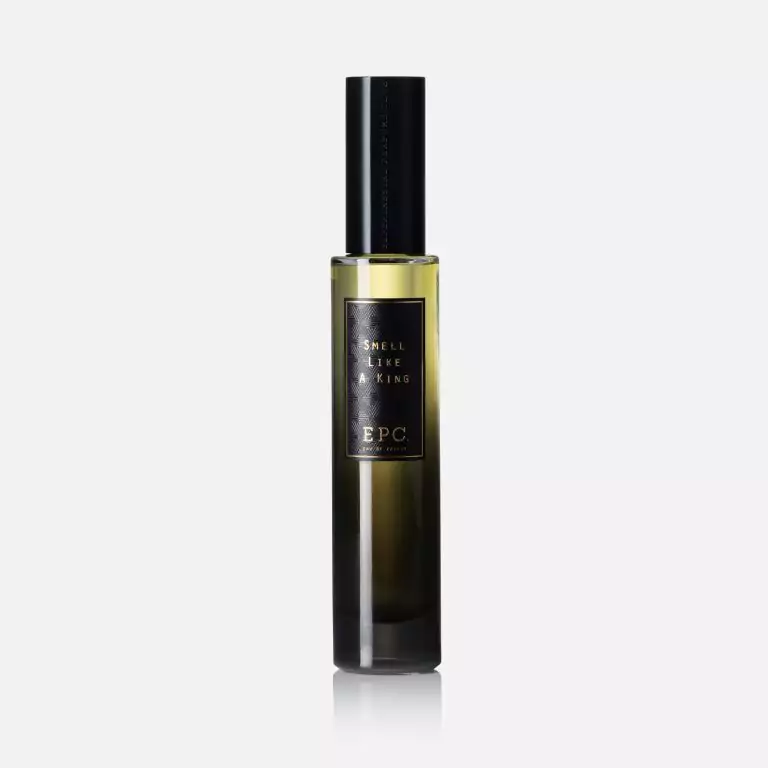Ever stood in front of shelves packed with skincare products feeling completely lost? You’re not alone. The world of skincare can feel like a maze of confusing ingredients, endless steps, and conflicting advice.
Many people struggle with building a daily routine that actually works. They waste money on products that don’t deliver results. They wonder why their skin isn’t improving despite trying everything. Some even give up altogether, missing out on the benefits of proper skincare.
But there’s good news! Creating an effective skincare routine doesn’t need to be complicated. By understanding the essential steps – from identifying your skin type to mastering the basics of cleansing, moisturizing, and sun protection – you can build a simple routine that works for your unique needs.
In this guide, we’ll break down exactly what you need to know to create a skincare routine that’s both effective and easy to maintain. No fancy jargon, just practical advice to help you achieve healthier, happier skin.
The Cleansing Foundation
Cleansing is the cornerstone of any skincare routine. It sets the stage for everything that follows. Think of it as preparing a canvas before painting – you need a clean surface for the best results.
A good cleanser removes dirt, makeup, excess oil, and environmental pollutants that build up on your skin throughout the day. Without this essential first step, all those expensive serums and moisturizers you apply afterward won’t work properly since they can’t penetrate through the layer of grime.
Morning and evening cleansing serve different purposes in your skincare routine. In the morning, you’re mainly washing away sweat and oil that accumulated while you slept. A gentle cleanser works best here; don’t strip your skin first thing in the day!
Evening cleansing requires a more thorough approach. You’re removing sunscreen, makeup, and all the dirt your skin collected during the day. Many skincare experts recommend double cleansing at night. Start with an oil-based cleanser to break down makeup and sunscreen, followed by a water-based cleanser to remove any remaining residue.
The right cleansing techniques can make a huge difference in your skin’s health. Always use lukewarm water instead of hot, which can damage your skin’s natural barrier.
Massage your cleanser in gentle circular motions for about 30-60 seconds – don’t rush this step! Pat (don’t rub) your face dry with a clean towel. When choosing a cleanser, consider your skin type: gel or foaming cleansers work well for oily skin, cream or balm cleansers are better for dry skin, and fragrance-free gentle cleansers are ideal for sensitive skin.
Remember that tight, squeaky-clean feeling after washing isn’t actually good – it means you’ve stripped your skin of its natural oils.
Hydration Station: All About Moisturizing
Moisturizing is a non-negotiable step in any skincare routine, regardless of your skin type. Even if you have oily skin, you still need hydration! Skipping moisturizer can actually make oily skin worse because when your skin feels dry, it produces even more oil to compensate.
The key is finding the right moisturizer for your skin type. Hydration importance cannot be overstated – properly moisturized skin looks plumper, healthier, and shows fewer signs of aging over time.
When shopping for moisturizers, look for ingredients that actually work instead of fancy packaging. Hyaluronic acid is a superstar that holds up to 1,000 times its weight in water, making it perfect for adding moisture without heaviness.
Glycerin is another great hydrator that draws water into the skin. Ceramides help repair your skin’s natural barrier, while ingredients like squalane and shea butter lock in moisture. For oily skin, look for lightweight gel formulas with terms like “oil-free” or “non-comedogenic” (won’t clog pores).
Dry skin benefits from richer creams with more emollients.
Applying moisturizer correctly makes a big difference in how well it works. The best time to apply is right after cleansing while your skin is still slightly damp – this helps lock in that moisture.
Use upward, gentle strokes and give it a minute to absorb before applying anything else.
You might also need to adjust your moisturizer with the seasons. During winter months when indoor heating creates dry air, switch to something richer. In summer, especially if you’re in a humid climate, a lighter gel moisturizer might be all you need.
Sun Protection: Your Daily Shield
Sunscreen importance can’t be stressed enough – it’s the single most effective anti-aging product you can use. UV damage doesn’t just cause sunburns; it leads to wrinkles, dark spots, uneven skin tone, and increases skin cancer risk.
The surprising truth is that you need sunscreen every single day, even when it’s cloudy or you’re staying indoors. Those powerful UVA rays can penetrate through clouds and windows, silently damaging your skin.
Choosing the right SPF can feel confusing with so many options available. For daily use, look for a broad-spectrum sunscreen (protects against both UVA and UVB rays) with at least SPF 30. If you’re spending time outdoors, swimming, or sweating, go for SPF 50 or higher and make sure it’s water-resistant. The formula matters too – if you have sensitive skin, mineral sunscreens with zinc oxide or titanium dioxide tend to be less irritating than chemical formulas. Don’t rely on makeup with SPF as your only protection; these products rarely provide enough coverage since most people don’t apply them thickly enough.
Choosing the right SPF can feel confusing with so many options available. For daily use, look for a broad-spectrum sunscreen (protects against both UVA and UVB rays) with at least SPF 30.
If you’re spending time outdoors, swimming, or sweating, go for SPF 50 or higher and make sure it’s water-resistant. The formula matters too – if you have sensitive skin, mineral sunscreens with zinc oxide or titanium dioxide tend to be less irritating than chemical formulas.
For sunscreen to actually work, you need to apply it correctly. Use about a nickel-sized amount for your face and a shot glass full for your body.
Apply it 15-30 minutes before going outside so it has time to set. Don’t forget often-missed spots like your ears, neck, the back of your hands, and lips (use an SPF lip balm).
The biggest mistake people make is not reapplying – sunscreen needs to be refreshed every two hours, or immediately after swimming or heavy sweating.
Serums pack a powerful punch in a tiny bottle! These lightweight products contain concentrated ingredients that sink deep into your skin to target specific concerns.
For hydration, look for hyaluronic acid to lock in moisture. If you want brighter skin, vitamin C serums help fade dark spots. For wrinkles, try retinol or peptides to boost elasticity.
Serums pack a powerful punch in a tiny bottle! These lightweight products contain concentrated ingredients that sink deep into your skin to target specific concerns. For hydration, look for hyaluronic acid to lock in moisture. If you want brighter skin, vitamin C serums help fade dark spots. For wrinkles, try retinol or peptides to boost elasticity. Use serums at the right time for best results – antioxidants like vitamin C in the morning protect your skin from daily damage, while repair serums like retinol work best at night. Exfoliation is another key step that removes dead skin cells, giving you smoother skin and helping other products work better. Chemical exfoliants like AHAs and BHAs dissolve dead cells without scrubbing, making them great for sensitive skin. Physical exfoliants with small particles physically remove dead cells and work well for normal or oily skin. How often you exfoliate depends on your skin type – normal skin can handle 2-3 times weekly, dry skin should stick to once a week, while oily skin can go up to 3-4 times weekly with salicylic acid. For the best results, layer your products correctly: cleanser first, then exfoliator (if using), followed by toner, serums (thinnest to thickest), moisturizer, and sunscreen in the morning. This order ensures each product can do its job effectively, creating a skincare routine that works for your specific needs.
Your skin needs different care in the morning versus nighttime. A morning routine should protect your skin from daily damage, while evening care focuses on repair and renewal.
Start your day with a gentle cleanser to wash away oils that built up overnight. Apply a hydrating toner to prep your skin, followed by a vitamin C serum for brightness and protection from pollution.
Your skin needs different care in the morning versus nighttime. A morning routine should protect your skin from daily damage, while evening care focuses on repair and renewal. Start your day with a gentle cleanser to wash away oils that built up overnight. Apply a hydrating toner to prep your skin, followed by a vitamin C serum for brightness and protection from pollution. Dab on eye cream to reduce morning puffiness, then lock everything in with a light moisturizer. Always finish with sunscreen – this step is non-negotiable for preventing aging and sun damage! In the evening, start with double cleansing – first an oil cleanser to remove makeup and sunscreen, then a regular cleanser for deep cleaning. Use exfoliants 1-3 times weekly based on your skin type. Apply toner, then night treatments like retinol or hydrating serums that repair while you sleep. Finish with a richer night cream and eye cream to support overnight recovery. When mornings are rushed, stick to the basics – cleanse, moisturize, and apply sunscreen. Try products that do double-duty, like moisturizers with SPF. Nighttime is perfect for treatments that might make skin sensitive to sunlight, like retinol for wrinkle prevention and AHAs for skin renewal. Hydrating masks give intense moisture, especially after exfoliation. By tailoring your routines to morning protection and evening repair, your skin gets exactly what it needs at the right time.
Building Your Routine: Putting It All Together
Starting a skincare routine doesn’t have to be complicated. Begin with three essential steps: cleanse, moisturize, and apply sunscreen. A gentle cleanser removes dirt without stripping your skin’s natural oils.
Choose a moisturizer that matches your skin type – gel for oily skin, cream for dry skin. Sunscreen with at least SPF 30 is crucial every morning, even on cloudy days.
Final Thoughts: Your Journey to Healthier Skin
Starting a skincare routine is like planting a garden – it takes time, care, and patience to see results. Don’t feel pressured to use dozens of products or follow complex routines you see online.
The best skincare routine is one you’ll actually stick with! Begin with the core steps we’ve covered – cleansing, moisturizing, and sun protection – then slowly add treatments that address your specific concerns.
Remember that your skin changes with seasons, stress levels, and age. What works today might need adjusting next year. Listen to your skin and be willing to adapt. The most expensive products aren’t always the best – sometimes simple, affordable options deliver amazing results. Track your progress with photos and notes about how your skin feels, not just how it looks.
Building healthy skin habits now will reward you for years to come. If you have questions about creating your personalized skincare routine or need recommendations for specific concerns, feel free to reach out at darina@atelier-niche.com. Your skin deserves the best care, and I’m here to help you achieve that glowing, healthy complexion you’ve always wanted!
Frequently Asked Questions (FAQs)
1. How can I tell what my skin type is?
Check how your skin feels a few hours after washing. If it gets shiny all over, you likely have oily skin. If it feels tight and flaky, you probably have dry skin. Combination skin is oily in the T-zone (forehead, nose, chin) but dry on the cheeks. Sensitive skin reacts easily with redness or irritation to new products or weather changes.
2. Do I really need to use sunscreen every day, even in winter?
Yes! UV rays damage your skin year-round, even on cloudy days and in winter. UVA rays (which cause aging) can penetrate windows, so you need protection even indoors. Daily sunscreen is the best way to prevent wrinkles, dark spots, and skin cancer.
3. How long should I wait before seeing results from new skincare products?
Most products need 4-6 weeks to show real results, which is about how long it takes for skin cells to renew. Be patient and consistent. Some products like chemical exfoliants might show faster results, while treatments for dark spots or wrinkles can take 8-12 weeks.
4. Can I use the same products all year, or should I switch them seasonally?
Most people benefit from adjusting their routine seasonally. In winter, use richer moisturizers to combat indoor heating and cold, dry air. In summer, lighter formulas and higher SPF may work better, especially if you’re in a humid climate or spend time outdoors.
5. Is double cleansing necessary, or is one cleanser enough?
Double cleansing (using an oil-based cleanser followed by a water-based one) is most helpful when you wear sunscreen, makeup, or spend time in polluted environments. If you don’t wear makeup or sunscreen, a single gentle cleanser may be sufficient.
6. How often should I change my pillowcase for better skin?
Aim to change your pillowcase at least once a week, or twice if you have acne-prone skin. Pillowcases collect oils, dead skin cells, and bacteria that can clog pores and cause breakouts when pressed against your face all night.
7. Can I use retinol and vitamin C together in my routine?
It’s best to use vitamin C in the morning for antioxidant protection and retinol at night for repair. Using them together can reduce their effectiveness and increase skin irritation. If you want to use both on the same day, apply vitamin C in your morning routine and retinol at night.
8. How much of each product should I use on my face?
For cleanser, use about a nickel-sized amount. For serums, a pea-sized drop is usually enough. Moisturizer should be about the size of a quarter. Sunscreen needs a full teaspoon for your face and neck to get the protection listed on the label.
9. What’s more important for skin health – skincare products or diet and lifestyle?
Both matter! The best skincare products won’t overcome the effects of smoking, excessive alcohol, poor sleep, or an unhealthy diet. Staying hydrated, eating plenty of fruits and vegetables, managing stress, and getting enough sleep dramatically improve your skin from the inside out.
10. How do I know if a product is breaking me out or if it’s just purging?
Purging typically happens in areas where you normally break out and occurs when using active ingredients like retinol or AHAs that increase cell turnover. These breakouts usually clear up within 4-6 weeks. A bad reaction tends to appear in new areas, may include redness or irritation, and persists beyond 6 weeks.

Darina Doroshenko is the Managing Director of Atelier Niche; specializing in bringing exclusive niche perfume and skincare brands to the UK, Europe, CIS, and Middle East. With over 18 years of experience, she has held top positions at prestigious brands like Chanel, Givenchy, Shiseido, Penhaligon’s, L’Artisan Parfumeur, Serge Lutense, and Roja, overseeing all channels of distribution.



0 Comments